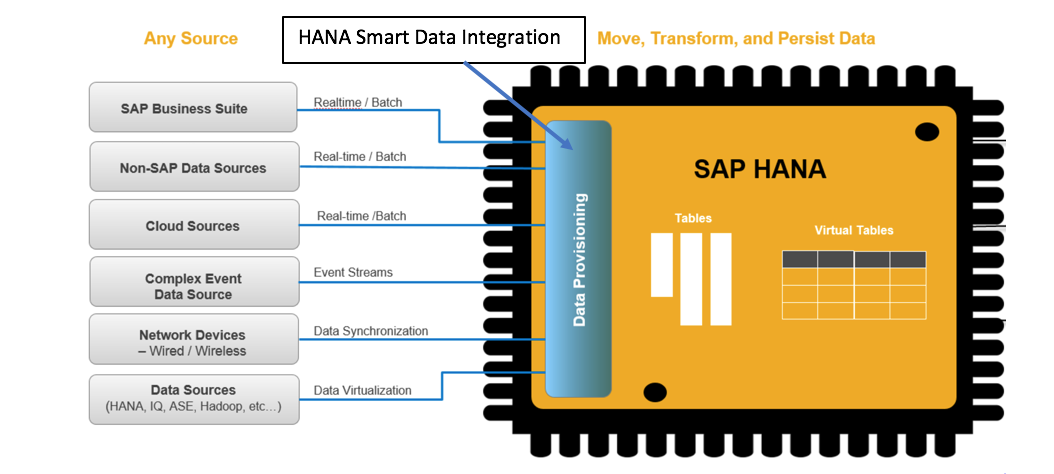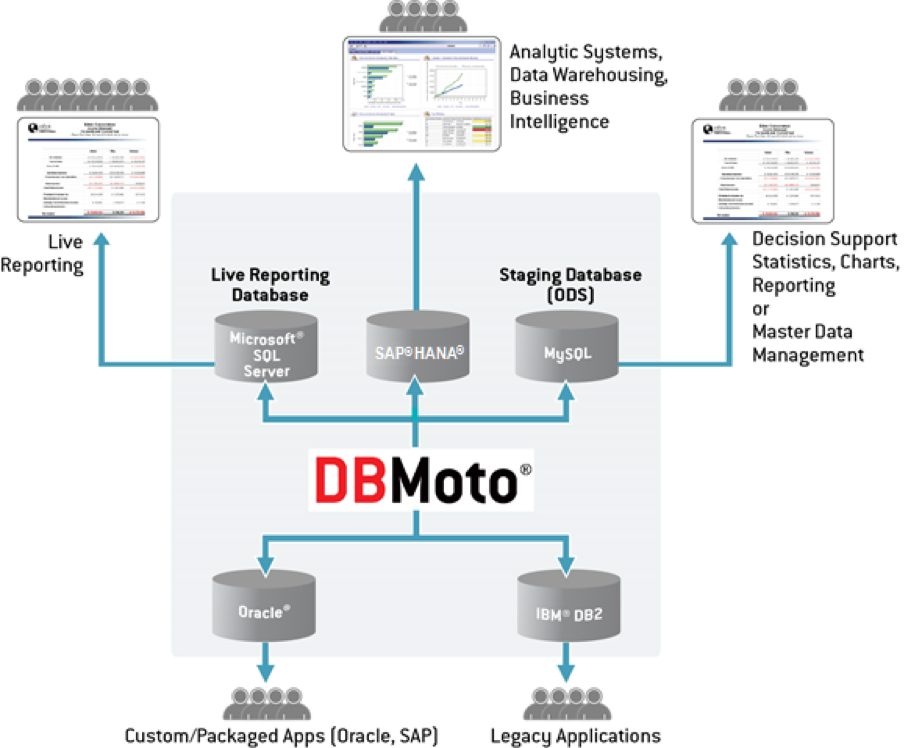There are many tools available in the market to support real-time data replication; however, in this article, we will focus on two widely used tools and their best-case usage scenarios:
- BackOffice Associates DBMoto®
- SAP® HANA® Smart Data Integration (SDI)
Real-time data replication can happen across multiple use cases or combinations of databases and required features. The table below outlines key features of both offerings that can help you decide which tool to use in your use case:
 The vision for HANA Smart Data Integration is to provide native data integration capability on the HANA platform, making it easy for customers to choose a data replication tool that fits their needs.
The vision for HANA Smart Data Integration is to provide native data integration capability on the HANA platform, making it easy for customers to choose a data replication tool that fits their needs.

In the future, HANA SDI will be the tool of choice for most of the data transfer needs involving HANA; however, even in the HANA ecosystem today, there are multiple tools available to support different data migration use cases. SAP Data Services, SAP Landscape Transformation Replication Server (SLT), and SAP HANA Smart Data Streaming each offer advantages within different data migration use cases. For example:
- SAP Data Services: Batch ETL Jobs with advanced transformation
- SAP SLT: Company code mergers or side car data replication
- SAP Smart Data Streaming: For streaming data set
In use cases involving a SAP HANA database as the target in which a native data integration solution is required, HANA SDI can also be utilized.
Real-Time Data Replication and CDC with BackOffice Associates DBMoto
DBMoto is the preferred solution for use cases involving real-time data replication across heterogeneous source and target systems, Change Data Capture, and data transformation in an enterprise environment.
DBMoto has three modes to perform real-time data replication:
- Refresh (Snapshot) Mode: Reads a data set, applies administrator-defined mapping rules, and writes the entire result to the target database.
- Mirroring (CDC) Mode: One-way replication using CDC from source to target in real-time, based on transaction log management whenever possible.
- Synchronization Mode: Uses CDC-based transaction log management and custom conflict resolution strategies to keep multiple databases bi-directionally synchronized.
It’s clear that DBMoto is the tool of choice for a wide variety of real-time data migration scenarios. Interested in a free trial? Click here for the free trial software.
